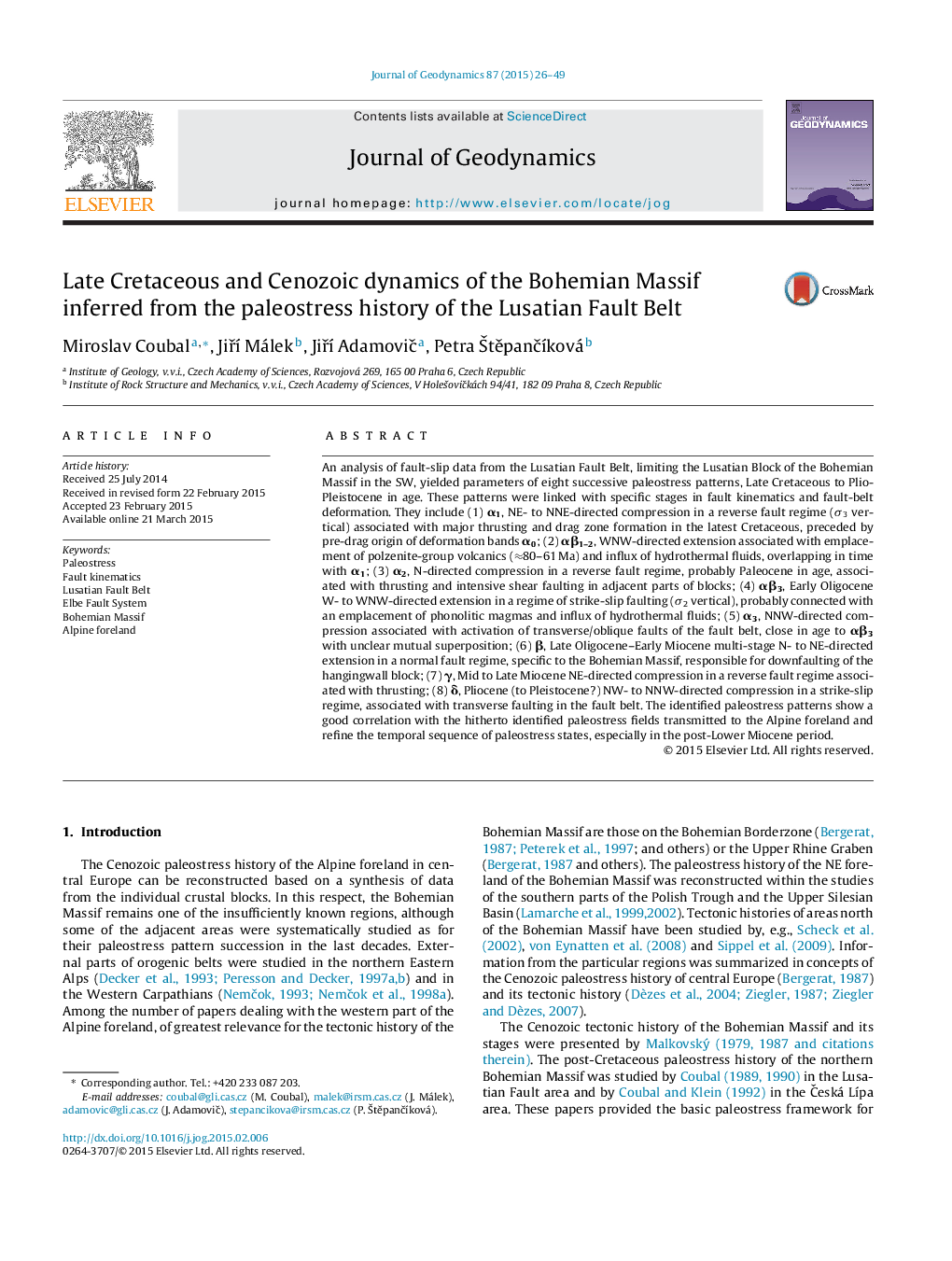| کد مقاله | کد نشریه | سال انتشار | مقاله انگلیسی | نسخه تمام متن |
|---|---|---|---|---|
| 4688028 | 1635762 | 2015 | 24 صفحه PDF | دانلود رایگان |

• We document 8 Late Cretaceous to Pliocene paleostress patterns around the Lusatian Fault.
• We explain the kinematic effects of the paleostress patterns.
• Identified patterns are correlated with paleostress fields in the Alpine foreland.
• Paleostress patterns specific to the Bohemian Massif are characterized.
An analysis of fault-slip data from the Lusatian Fault Belt, limiting the Lusatian Block of the Bohemian Massif in the SW, yielded parameters of eight successive paleostress patterns, Late Cretaceous to Plio-Pleistocene in age. These patterns were linked with specific stages in fault kinematics and fault-belt deformation. They include (1) α1, NE- to NNE-directed compression in a reverse fault regime (σ3 vertical) associated with major thrusting and drag zone formation in the latest Cretaceous, preceded by pre-drag origin of deformation bands α0; (2) αβ1–2, WNW-directed extension associated with emplacement of polzenite-group volcanics (≈80–61 Ma) and influx of hydrothermal fluids, overlapping in time with α1; (3) α2, N-directed compression in a reverse fault regime, probably Paleocene in age, associated with thrusting and intensive shear faulting in adjacent parts of blocks; (4) αβ3, Early Oligocene W- to WNW-directed extension in a regime of strike-slip faulting (σ2 vertical), probably connected with an emplacement of phonolitic magmas and influx of hydrothermal fluids; (5) α3, NNW-directed compression associated with activation of transverse/oblique faults of the fault belt, close in age to αβ3 with unclear mutual superposition; (6) β, Late Oligocene–Early Miocene multi-stage N- to NE-directed extension in a normal fault regime, specific to the Bohemian Massif, responsible for downfaulting of the hangingwall block; (7) γ, Mid to Late Miocene NE-directed compression in a reverse fault regime associated with thrusting; (8) δ, Pliocene (to Pleistocene?) NW- to NNW-directed compression in a strike-slip regime, associated with transverse faulting in the fault belt. The identified paleostress patterns show a good correlation with the hitherto identified paleostress fields transmitted to the Alpine foreland and refine the temporal sequence of paleostress states, especially in the post-Lower Miocene period.
Journal: Journal of Geodynamics - Volume 87, July 2015, Pages 26–49